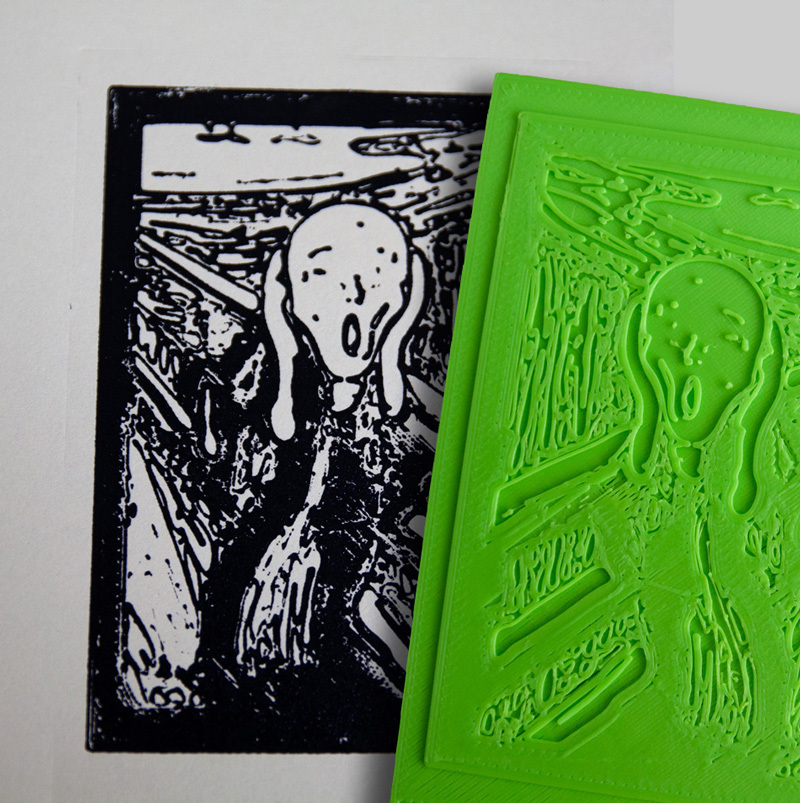
Relief Printing Tutorial, 3D printed
thingiverse
Relief Printing. Image: Detail of Edward Munch(1944), The Scream, 1895. https://en.wikipedia.org/wiki/Edvard_Munch You will need: 1. Relief printing plate (3D printed) 2. Spatula (not essential) 3. Rubber roller (essential) 4. Etching ink (for etching on copper, you may need real copper ink, not water-soluble) 5. Pane of glass (essential) How to: - Add a small dot of ink to the glass pane - Use a spatula to spread out the ink - Roll until you get a smooth layer of ink onto the rubber roller - Roll with a very gentle hand onto the relief print - Roll diagonally to every corner so the rubber roller does not roll off the edge of the relief - Press the edge of paper firmly onto the table at the edge and let the paper gently drop over the relief plate. - First, press gently with your hand - Use the backside of a spoon to rub the paper really hard against the relief print. About the 3D-printed relief plate (recommended number): - Base of plate -> 1.5 - 2mm - Relief -> 0.2 - 0.5 mm Comments: If you want very nice prints, you will need an artist print press and thicker printing papers. Also, review the relief print carefully at the design stage. The paper needs some moisture to pick up the ink well. If you want to print on copper for etching circuit boards, you may need oil-based etching ink instead of water-soluble. (I'll test water-soluble, it might work once dry?)
With this file you will be able to print Relief Printing Tutorial, 3D printed with your 3D printer. Click on the button and save the file on your computer to work, edit or customize your design. You can also find more 3D designs for printers on Relief Printing Tutorial, 3D printed.
